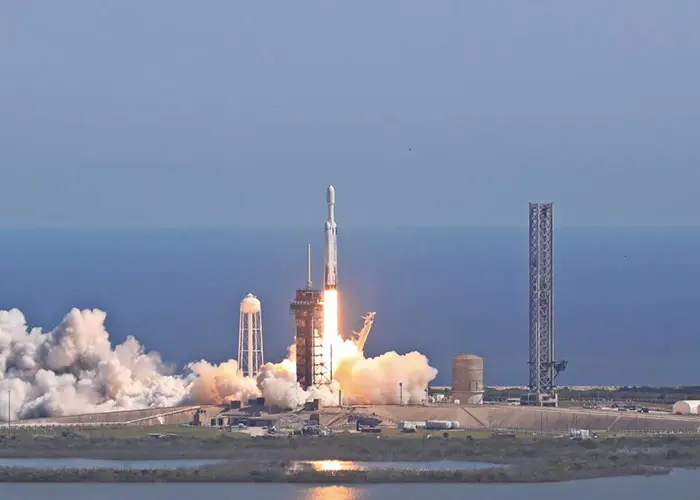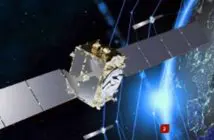
A SpaceX Falcon Heavy rocket took NASA’s Europa Clipper into orbit early on October 15, 2024 (AEDT). Having successfully lifted off from the Kennedy Space Center, the spacecraft will take almost six years to travel to Jupiter and investigate whether its moon, Europa, has conditions that might support life.
Europa Clipper is the largest spacecraft ever built by NASA and the first tasked with studying an ocean world beyond Earth. Europa Clipper will travel 2.9 billion kilometres on a trajectory that will leverage the power of gravity assists, first to Mars in four months and then back to Earth for another gravity assist flyby in 2026. After it begins orbiting Jupiter in April 2030, the spacecraft will fly past Europa 49 times.
“NASA leads the world in exploration and discovery, and the Europa Clipper mission is no different,” said NASA Administrator Bill Nelson. “By exploring the unknown, Europa Clipper will help us better understand whether there is the potential for life not just within our solar system, but among the billions of moons and planets beyond our Sun.”
Approximately five minutes after liftoff, the rocket’s second stage fired up, and the payload fairing, or the rocket’s nose cone, opened to reveal Europa Clipper. About an hour after launch, the spacecraft separated from the rocket. Ground controllers received a signal soon after, and two-way communication was established with NASA’s Deep Space Network facility in Canberra. Mission teams celebrated as initial telemetry reports showed Europa Clipper is in good health and operating as expected.
“We could not be more excited for the incredible and unprecedented science NASA’s Europa Clipper mission will deliver in the generations to come,” said NASA’s Science Directorate Associate Administrator Nicky Fox. “Everything in NASA science is interconnected, and Europa Clipper’s scientific discoveries will build upon the legacy that our other missions exploring Jupiter created.”
The main goal of the mission is to determine whether Europa has conditions that could support life. Europa is about the size of our Moon but its interior is different. Information from NASA’s Galileo mission in the 1990s showed strong evidence that under Europa’s ice lies an enormous, salty ocean with more water than all of Earth’s oceans combined. Scientists also have found evidence that Europa may host organic compounds and energy sources under its surface. If the mission determines Europa is habitable, it may mean there are more habitable worlds in our solar system and beyond.
The mission’s three main science objectives are to determine the thickness of the moon’s icy shell and its interactions with the ocean below, to investigate its composition, and to characterise its geology. The mission’s detailed exploration of Europa will help scientists better understand the astrobiological potential for habitable worlds beyond our planet.
In 2031, the spacecraft will begin conducting its science-dedicated flybys of Europa. Coming as close as 25 kilometres to the surface, Europa Clipper is equipped with nine science instruments and a gravity experiment, including an ice-penetrating radar, cameras, and a thermal instrument to look for areas of warmer ice and any recent eruptions of water.
To power those instruments in the faint sunlight that reaches Jupiter, Europa Clipper also carries the largest solar arrays NASA has ever used for an interplanetary mission. With arrays extended, the spacecraft spans 30.5 metres from end to end. With propellant loaded, it weighs about 5,900 kilograms.
In all, more than 4,000 people have contributed to Europa Clipper mission since it was formally approved in 2015.





